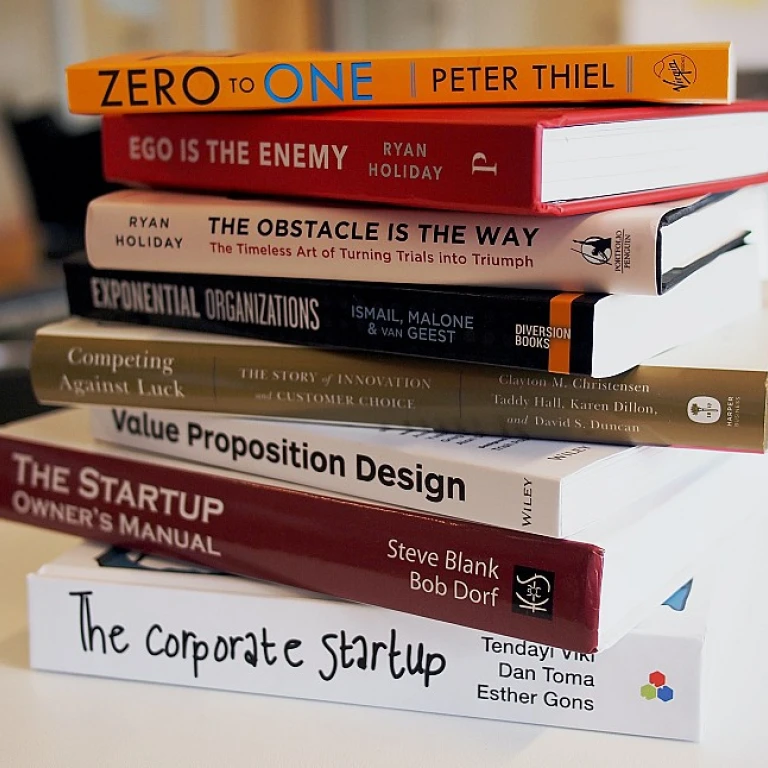
The Pillars of Organizational Decision Making: Transparency and Inclusivity
The Core Values: Ensuring Transparency in Organizational Choices
When it comes to decision-making within a company, a clear vision and open communication are the bedrock of success. Companies such as Google and Amazon stand out for their commitment to maintaining transparency in decision making. For instance, Google's project Aristotle, which examined successful team traits, underscored psychological safety – where team members feel safe to take risks and be vulnerable in front of each other – as crucial for innovative decision making.
The Role of Inclusivity in Driving Engagement
Involving employees at all levels not only fosters a sense of belonging but can also lead to better results. According to research from McKinsey Quarterly, companies with more diverse workforces perform better financially. Providing employees with a voice in the decision-making process can increase their commitment to the organization and its goals. Netflix, renowned for its forward-thinking approach to company culture, empowers its teams to make decisions that align with the organization's values, which has been instrumental in driving its success.
Navigating the Complexity: Decision Rights and Responsibilities
Clarifying Roles: Why Decision Rights Matter
In the realm of organizational decision making, understanding who holds the decision rights is as vital as the decisions themselves. In any company, operatives at different levels contribute diverse perspectives, which is why allocating decision-making authority effectively is paramount. McKinsey Quarterly highlights the significance of establishing clear decision rights to reduce bottlenecks and promote nimbleness within organizations.
A study by Harvard Business School professed that when employees have clarity on their decision-making authority, they are more likely to feel empowered and committed to the outcomes. Moreover, teams that grasp their boundaries of responsibility can coordinate better, align efforts, and trust the strategic direction set by their leaders.
Responsibilities in Decision Making: Ensuring Accountability
Equally essential in the decision making process is defining responsibilities. When responsibilities are ambiguous, there's a tendency for decisions to falter or become mired in indecision. A report by Deloitte suggests that providing employees with a clear understanding of their responsibilities can substantially improve the quality of decisions made within an organization.
Leaders like Steve Jobs of Apple and Reed Hastings of Netflix are renowned for fostering cultures where responsibilities are well-understood. This approach not only streamlines the decision making processes but also steers the organizations towards a shared vision. Establishing well-defined responsibilities creates a sense of ownership among decision makers, leading to more resolute and swift decision-making.
Mitigating Risks and Miscommunications
Risks abound when decision rights and responsibilities are not clear-cut. The Mcdonald’s Corporation experienced this firsthand when a lack of clarity led to delayed responses to market changes. Contrasting this, Amazon’s leadership fosters an environment where decision rights encourage agility, propelling them to the forefront of innovation.
Expert Gerald Lackey, in his discourse on organizational behavior, emphasizes the risk of miscommunication when responsibilities overlap. Proactive measures, such as creating decision matrices and holding recurring alignment meetings, are recommended to diminish these risks. Lackey's insights resonate with the teachings of Peter Drucker, who once sagaciously remarked, 'Whenever you see a successful business, someone once made a courageous decision.'
Integrating Decision Rights into Corporate Culture
Understanding and integrating decision rights into the corporate fabric is an ongoing process — one that's influenced by existing organizational culture and behaviors. Experts Leigh Weiss and Aaron de Smet from McKinsey argue that companies must continuously refine their decision-making processes to stay relevant.
When organizational decisions are rooted in culture, they tend to resonate more effectively throughout the workforce. The bounded rationality model—proposed by the Nobel laureate Herbert Simon—acknowledges the limitations of human cognition and suggests accounting for them in the decision-making structure. This approach allows for decisions that are not only rational but also intuitively align with the company's ethos.
For a deeper dive into the nuances of decision rights and their impact on healthcare strategies, explore The Intersection of Health and Behavioral Science in Corporate Strategy.
Rational vs. Intuitive: Balancing Decision Making Models
Combining Instinct with Analysis: The Art of Decision Making
When faced with important choices, successful organizations often balance the analytical with the instinctive, recognizing that both rational and intuitive approaches have a role to play. This blend is reflected in the perspectives shared by renowned experts, such as Herbert Simon, who highlighted the concept of bounded rationality, suggesting that while individuals seek to make rational decisions, their cognitive limitations often necessitate a degree of intuition.
Expert Insights into Rational Decision Making
The process of rational decision making is methodical and structured. It is grounded in data, facts, and logical analysis. A study conducted by McKinsey & Company revealed that organizations making data-driven decisions had a 19% increase in profitability. While the rational model assumes access to complete information and a clear preference order, practical experience indicates that such clarity is often elusive in business settings.
Harvard Business School's decision making models stipulate that quality decisions derive from a clear understanding of the decision's context and the careful evaluation of alternatives. This often involves utilizing frameworks like the Balanced Scorecard, which integrates various aspects of company strategy to aid management in achieving their objectives. For a deeper dive into these frameworks, one can explore strategic resources at C-Suite Strategy.
The Role of Intuition in Decision Making
Despite the merits of an analytical approach, sometimes the clock is against you, and a quick decision is needed. That's where intuition, or the 'gut feeling', comes into play. Leaders like Steve Jobs from Apple and Reed Hastings of Netflix are known for trusting their intuitions when making pivotal business decisions. Gerrard Lackey of Delphi techniques, another significant model in decision making, infers that collective intuition through expert consensus can be effective for complex problem-solving.
Intuitive decision making, which may seem at odds with data and analysis, actually complements the process by incorporating human experience and emotions, aspects that data alone may not capture. A report by the Harvard Business Review supports this claim, suggesting that even with all the data in the world, sometimes intuitive judgments are the most effective.
Integrating Intuitive and Rational Models
Refining the decision making model in an organization requires an integrated approach. For instance, a 'rational intuition' model could be used, where the initial screening of alternatives is done using intuition, followed by rational analysis. This combines the speed and experience of intuition with the thoroughness of rational procedures.
McDonald's Corporation, for example, utilizes a mix of rational analytical tools and intuitive judgment in its strategic decisions. This approach has proven to be an effective decision-making design, allowing for both efficient franchising decisions and innovative product launches. The results speak for themselves, as McDonald's maintains its dominant position in the fast-food industry globally.
Training for the Intuitive Leap
Encouraging a culture where intuition is acknowledged and refined is vital. To cultivate this, organizations may invest in leadership development, providing tools and scenarios that enhance managers' intuitive abilities. Studies show that over time, as one gains more experience in a particular domain, their ability to make faster, more accurate decisions improves—a testament to the power of informed intuition in organizational decision-making.
Ultimately, businesses striving for excellence must acknowledge the complex interplay between intuition and rationality. They must routinely reassess and adapt their decision-making styles to navigate the unpredictable currents of the business world. Whether through management decision-making courses or mentorship programs, the goal is to empower decision-makers at all levels to strike that delicate balance between the methodical and the instinctual.
Harnessing Data: The Fuel for Quality Decision Making
Igniting Quality Decisions with Data
In our pursuit of enhancing decision-making within organizations, we arrive at the linchpin of success: data utilization. A stark shift from relying solely on gut feelings, harnessing data in organizational decision making fuses the empirical with the experiential, offering a balanced approach to tackle business challenges. In the age of abundant information, data serves as a guiding star, shaping decision making processes that drive innovation and competitiveness.
Cultivating a Data-Driven Culture
The drive for quality decisions begins with embedding a data-driven culture. Organizations like Google and Amazon have set a precedent in this realm, demonstrating the transformative impact of data on operational agility and strategic foresight. Instead of being swept away by the torrents of big data, successful companies harness its power to inform and validate decisions.
Analyzing Data for Strategic Insights
The brilliance of data lies not just in its collection but in its analysis. Through sophisticated decision making models, managers can sift through noise to discover significant trends and inform organizational strategies. Reports from McKinsey Quarterly resonate with the narrative that informed data analytics can revolutionize how organizations perceive and respond to dynamic market conditions.
Quantifying Decision Making
To quote Peter Drucker, 'You can’t manage what you can’t measure.' The adoption of this mantra within the decision making process has led to the burgeoning field of decision metrics. By assigning quantitative values to outcomes, businesses now wield the power to assess the effectiveness of their decision making style.
Avoiding the Pitfalls of Data Misinterpretation
Yet, with great data comes great responsibility. The bounded rationality model proposed by Herbert Simon cautions against the oversimplification of complex data sets. Not every company has the luxury of an in-house Gerald Lackey or Leigh Weiss, but with deliberate efforts towards understanding the intricacies of data interpretation, missteps in decision making can be averted.
Data as the Bedrock for Collective Decision Making
Moreover, data is the cornerstone for collective insight generation within teams. By providing a common ground of factual information, it enables diverse perspectives to converge, fostering a more inclusive approach to making decisions. The case of Netflix is illustrative, where data-driven insights undeniably shape content strategies that resonate with viewers across the globe.
Addressing the Time Constraint in Data Analysis
One of the most critical challenges in organizational decision making is the time constraint. Rapid data processing techniques and technologies are imperative to enable swift yet informed decision making during crucial moments. In this light, McDonald's Corporation has leveraged the Delphi method in its strategic planning, facilitating quick consensus among experts, thereby navigating through the crunch time effectively.
Conclusion
Ultimately, data is not just an asset; it's a catalyst for enlightened decision making organizational practices. It bridges the gap between intuition and evidence, steering organizations away from the pitfalls of ambiguity towards a future of decisive clarity and success.
When Time is Ticking: Streamlining Decisions in Crunch Time
Mastering Time-Sensitive Decisions
In the bustling world of business, the clock often feels like it's racing against us. Managers and leaders face the daunting challenge of making pivotal organizational decisions within tight deadlines. This calls for a strategy where time management is as critical as the decisions themselves. But it isn't just about making quick decisions; it's about making them without compromising quality.
According to a McKinsey Quarterly report, swiftly made decisions can be just as effective as those made slowly, provided they're executed with a clear understanding of the problem and the organizational goals. A classic example comes from Google, where the decision-making engine never stalls, even when it's crunched for time. Their success speaks to the power of having a process that accommodates urgency without sacrificing strategic foresight.
Streamlining Processes with Agile Frameworks
For many organizations, the key to making quick, effective decisions lies in adopting agile methodologies. These frameworks prioritize iterative progress, allowing teams to be more adaptive and responsive in decision-making scenarios. In practice, this could mean setting up rapid, daily stand-ups to address urgent matters or using applications with real-time data to stay on top of fluctuating market trends.
When Netflix faced the need to evolve rapidly, their decision-making pivoted around agile principles, enabling the company to adapt to changing consumer behaviors and technological advancements. The result? A behemoth in the streaming industry, adept at fast-paced, quality decision-making.
Creating a 'Decision Playbook'
Another strategy embraced by successful companies like Amazon is the creation of a 'decision playbook'. This entails having established protocols and checklists for different types of decisions, especially those that recur often. By having a reference point, teams can navigate decision-making with speed and consistency. Jeff Bezos has famously implemented such mechanisms to expedite decision-making without falling prey to paralysis by analysis.
Organizations can learn from these examples by building their own playbooks tailored to their unique business contexts. This vets the decision process, ensuring that when the pressure mounts, there's a clear course of action that aligns with the company's strategic objectives.
Defeating Decision Fatigue
Decision fatigue can seriously harm the quality of decisions when under time constraints. This phenomenon is well-documented, with studies suggesting that the quality of our decisions deteriorates after a long session of decision-making tasks. Managers and teams need to recognize the signs of decision fatigue and employ strategies to counteract its effects.
This is where a decisive organizational culture, supported by data and clear processes, becomes invaluable. Companies like McKinsey emphasize the importance of delegating and distributing decision rights across the team to prevent bottlenecks and minimize the strain on individual decision-makers, thus maintaining the quality of organizational decisions over time.
Cultivating a Mindset for Quick, Quality Decisions
The final piece of the puzzle in streamlining decisions in crunch time is fostering a company culture that values decisive action backed by data and informed intuition. It's a balance between rapid response and thoughtful consideration, something Steve Jobs was renowned for at Apple. As Jobs demonstrated, the ability to make sharp, intuitive decisions often comes from years of experience and deep knowledge of one's business.
Organizational behavior experts agree that training and development play a huge role in cultivating this mindset. Training programs focused on decision-making can prepare employees to face high-pressure situations calmly and effectively, ultimately leading to better performance and competitive advantage.
By combining these strategies with a long-term vision, businesses manage to not only survive but thrive in situations where quick decisions are imperative. The focus on time-sensitive decision-making shouldn't detract from the overarching goals; if anything, it should align closely with the strategic path the organization walks on.
Empowering the Team: Building Effective Decision Making Capabilities
Creating a Solid Foundation for Team-Based Decision Making
Behind every successful organization lies a team equipped with the right tools and knowledge to make strategic decisions. But fostering an environment where effective decision making thrives requires more than just wishful thinking. It calls for a deliberate approach to empowering employees at all levels. Google, renowned for its decision making model, demonstrates through its team autonomy and open culture how teams can act as the lifeblood of organizational decision making.
Instilling Confidence and Competence in Decision Makers
Consider Peter Drucker's insight on the subject: "The most effective decision makers are those who are willing to suffer the agony of decision-making." Building confidence within a team to endure this "agony" is vital. Organizations can achieve this by providing comprehensive training and resources, enabling teams to make well-informed decisions. Studies have shown that when employees have both the required knowledge and the confidence to use it, the quality of decisions improves significantly.
Adopting a Collaborative Decision Making Style
Collaboration is at the core of modern decision making in organizations. The Harvard Business Review highlights how business giants such as Amazon and Netflix capitalize on collaborative decision making styles to propel their success. Case studies indicate that when diverse perspectives are harnessed, teams can navigate complex issues and drive innovative solutions.
Setting Up Clear Decision Making Processes
Structured decision making processes are the scaffold for effective team decisions. A McKinsey Quarterly report suggests that clarity in the decision making process can lead to better strategic alignment and faster execution. Furthermore, clearly defining decision rights within the process ensures accountability and minimizes confusion, enabling teams to act decisively when it matters most.
Embracing a Culture of Continuous Learning
Empowering teams for decision making is not a one-off event but an ongoing journey. Reed Hastings of Netflix champions the idea of an ever-evolving decision making process based on continuous learning. Organizations that embrace this philosophy foster a culture where making decisions is not seen as a burden but as an opportunity for growth and improvement.
Leveraging Technology and Data Analytics
About data, it's the new oil of the digital economy. Integrating advanced analytics and decision making tools into the organizational fabric can give teams a competitive edge. By drawing on actionable insights from data, companies make more accurate predictions and smarter decisions in real time.
Measuring and Rewarding Good Decision Making
Finally, recognizing and rewarding good decision making reinforces the behavior across the team. According to a Delphi study, incorporating systems to measure the efficacy of decisions substantiates their quality and impact, encouraging teams to strive for continued excellence in their decision making efforts.
Long-Term Vision: Incorporating Decision Making in Organizational Strategy
A Blueprint for Sustainable Success: Integrating Decision Making into Strategy
Putting decision making at the heart of an organization's strategic plan isn't just a nice-to-have; it's a non-negotiable for sustainable success. When decision-making processes are weaved into the fabric of organizational strategy, companies position themselves to act with foresight and agility. This forward-thinking approach involves defining clear objectives, understanding how each decision aligns with these objectives, and recognizing the potential impact on long-term goals.
Seeding Decision Making in the Soil of Company Culture
In the pursuit of a long-term vision, it’s essential to cultivate a culture where decision making is seen as a strategic process. Cultural norms should steer teams toward not just making choices but making choices that support the overall business strategy. This implies that employees understand the 'why' behind their actions, and managers encourage a strategic mindset at every level of the organization. Encouraging such a culture can lead to a more cohesive organizational direction, with each member contributing thoughtfully to the company's evolution.
The Symmetry of Strategy and Decision Quality
The quality of organizational decisions cannot be left to chance. It should be the direct outcome of a well-established strategy that spells out when to take bold steps and when to proceed with caution. A strategic filter helps ensure that the multitude of decisions made daily are consistent and contribute positively towards achieving the company's objectives. Establishing criteria for decision quality within the strategy helps maintain this consistency.
Decision Making Beyond Today: Forecasting and Scenario Planning
Strategic organizational decision making is about looking beyond the here and now. It involves forecasting future trends and preparing for various scenarios. Managers should lead teams to consider the long-term implications of their choices and to develop the capacity to adapt to unforeseen changes. Leveraging techniques like scenario planning can equip employees to anticipate and respond to future challenges, keeping the company steady and proactive in a sea of uncertainty.
Architecting Systems for Longevity: Institutionalizing Decision Processes
To make lasting changes, it's pivotal to institutionalize decision-making processes by incorporating them into standard operating procedures. Documenting methodologies, sharing best practices, and using technology to facilitate knowledge transfer ensures that the decision-making 'code' is not lost amidst staff turnovers or shifts in management. This structure not only adds to the resilience of the organization but also supports consistent decision quality across departments and over time.
Measuring What Matters: KPIs for Decision Making
What gets measured gets managed. Key performance indicators (KPIs) should be established to track the efficiency and effectiveness of decision-making processes. By regularly reviewing decision outcomes against the strategic objectives, organizations can fine-tune their approach, celebrate what works, and address areas that need improvement. This reflective practice is a cornerstone of a strategy that evolves with the organization and the landscape it operates in.
Cultural Fit: Aligning Decision Making Practices with Organizational Behavior
Fostering a Decision-Making Culture That Reflects Your Organization
Every company operates within its own unique culture, and decision-making is no exception to this rule. The art of aligning decision-making practices with organizational behavior cannot be overstated. Amazon, for instance, swears by its "Leadership Principles" which guide employees towards effective decision-making that fuels innovation and customer satisfaction. This alignment ensures decisions are not just top-down edicts but resonate with the values and behaviors embedded within the organization. Similarly, Netflix's famed culture of 'Freedom and Responsibility' empowers its team members to make decisions that they deem fit for the situation, encouraging ownership and quick action.
Studies have underpinned the notion that when an organization's decision-making processes mirror its cultural values, it enhances employee buy-in and engagement. According to a Deloitte report, organizations with a strong sense of purpose, beyond just profit, are more confident in their growth prospects and have employees who remain engaged and committed to company decisions.
The Crucial Intersection of Bounded Rationality and Organizational Ethics
In striving for quality decisions, organizations often grapple with the concept of bounded rationality, a term introduced by Nobel laureate Herbert Simon. It suggests that cognitive limitations and context influence decisions, even within an organization. Marrying this concept with an ethical framework prevents decision-making from becoming purely a numbers game. It's about considering wider implications and ethical standpoints which can enhance reputation and trust among stakeholders.
An example is Google's AI Principles that guide its decision-making to avoid creating or reinforcing unfair bias. Mcdonald’s Corporation's commitment to sustainability in their decision-making has also transformed their brand perception, illustrating how decisions in line with ethics can drive positive change and brand loyalty.
Cultivating Decision-Making Acumen by Embracing Organizational Behavior
Managers play a pivotal role in shaping decision-making practices that sync with organizational behavior. Management decision-making is not an isolated function but is deeply interlinked with the dynamics of team behavior and organizational culture. For instance, McKinsey Quarterly highlights the importance of teams having clarity about decision-making roles to avoid confusion and inefficiencies, fostering a more agile and responsive decision-making environment.
Experts such as Peter Drucker have stressed the multiplication of effectiveness when managers focus on making strengths productive. When decision-making is reflective of the team’s strengths and the organization’s behavior, it not only streamlines the process but also magnifies the impact of each decision taken.
The linkage between organizational behavior and decision-making necessitates ongoing evaluation and adaptation. Harvard Business Review suggests that learning from past decisions is essential for organizational growth. Therefore, forming decision-making practices that are not static but evolve with the organization's behavior and learning ensures continuous improvement and relevance in a dynamic business environment.
As the landscape of business shifts, understanding and internalizing the methodology of effective organizational decision making becomes paramount. Strategies that meld decision making and organizational behavior help create an environment where decisions are not merely transactions but are imbued with the company's ethos and approach, leading to sustainable and scalable success.







-large-teaser.webp)






